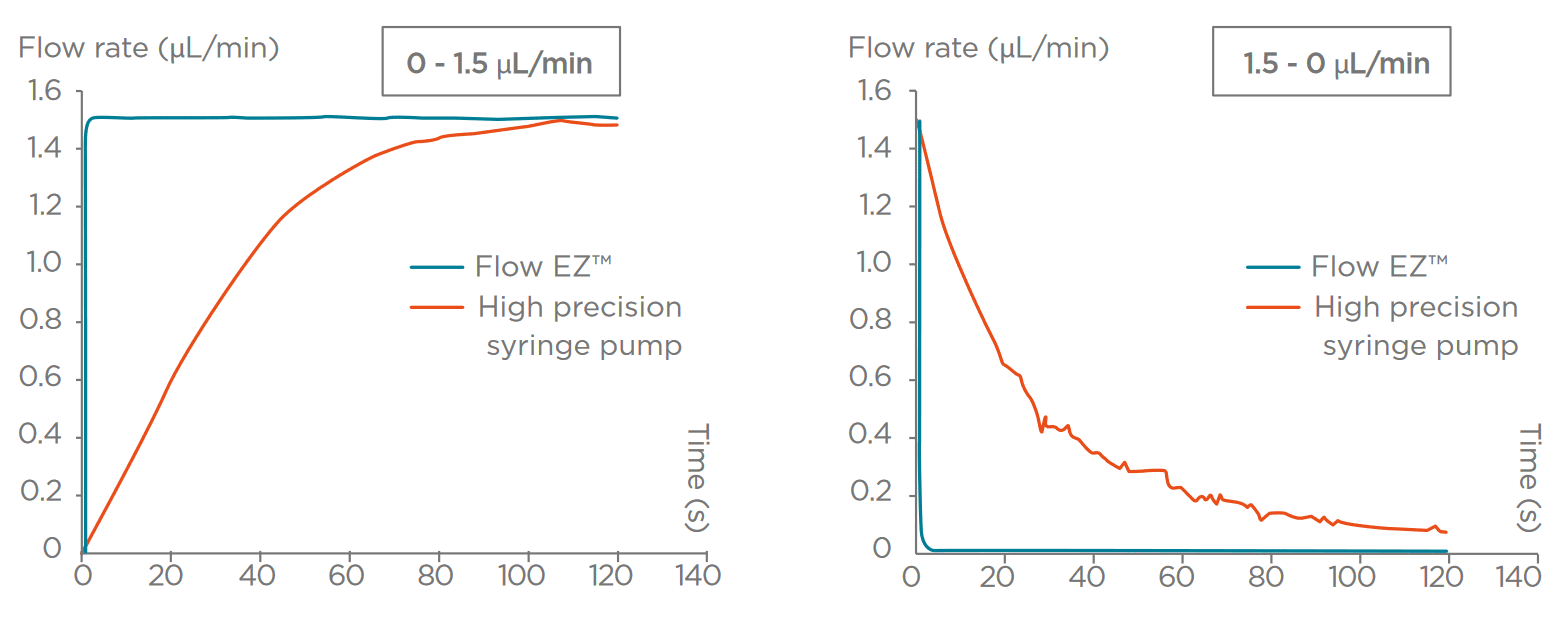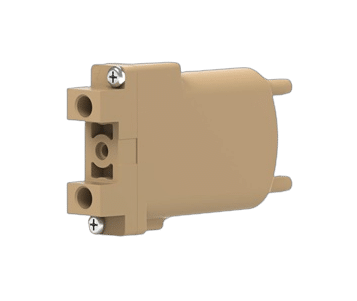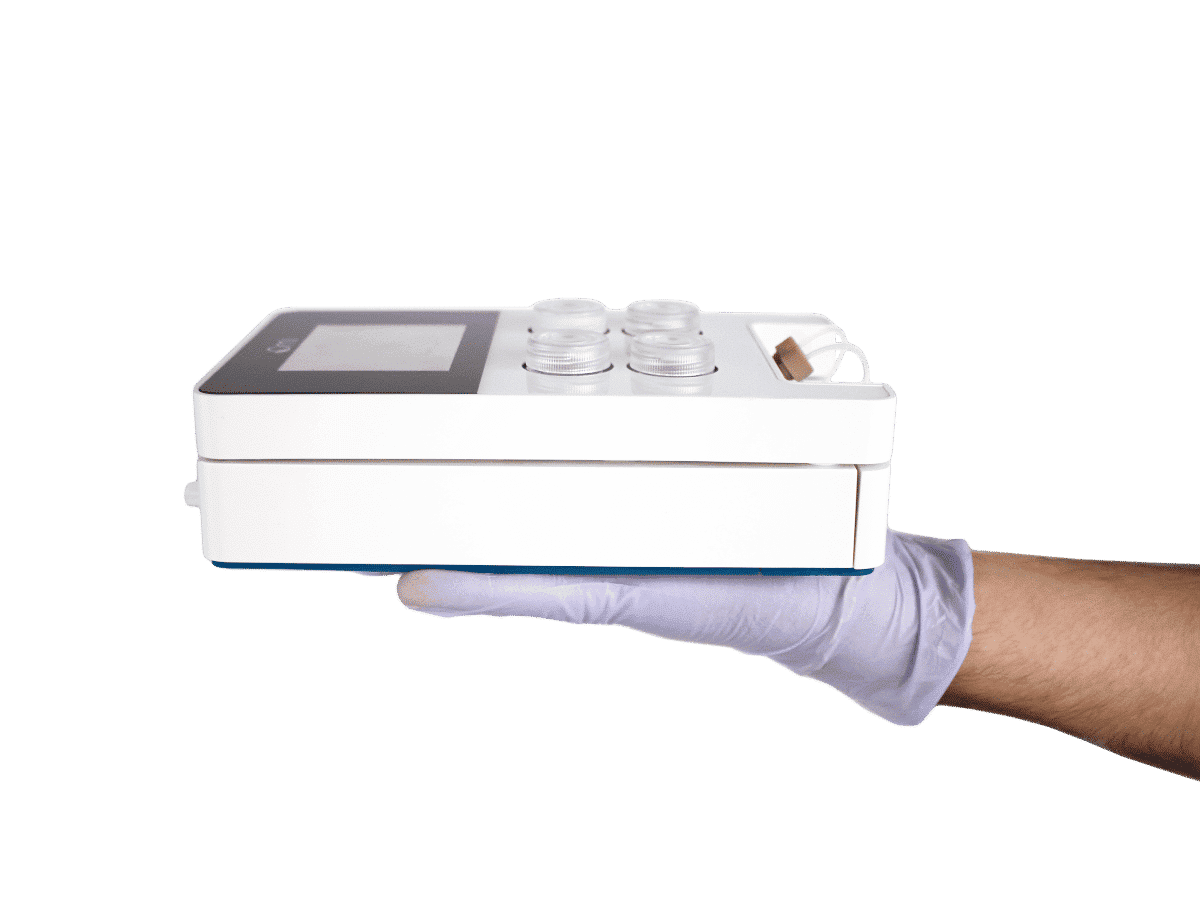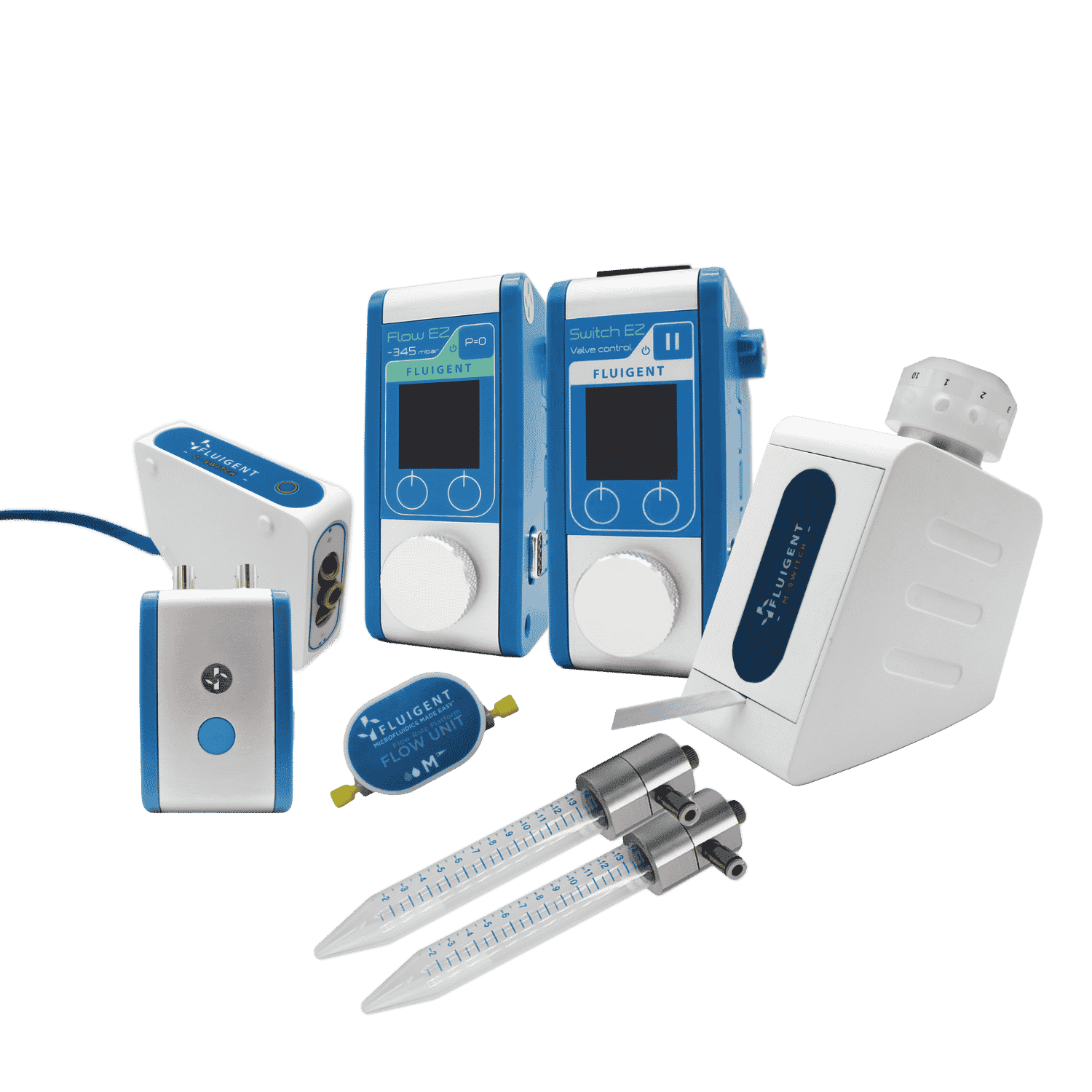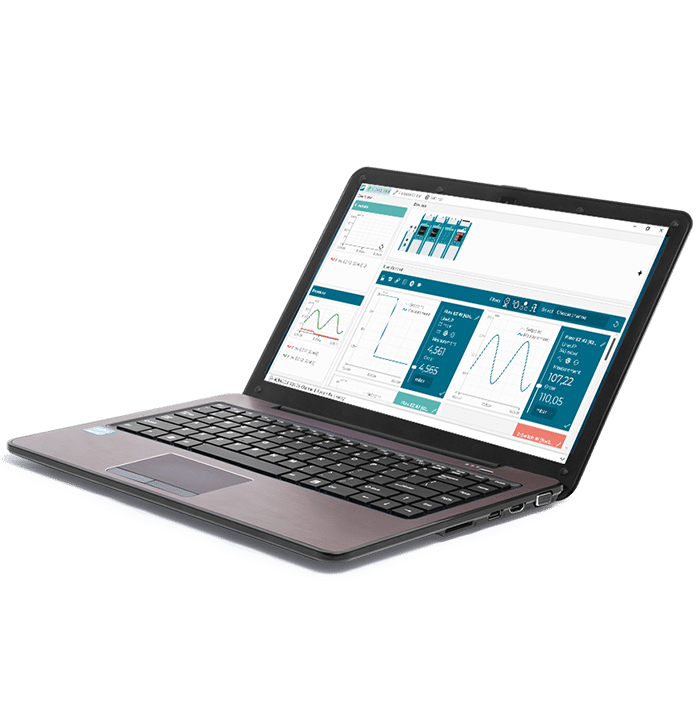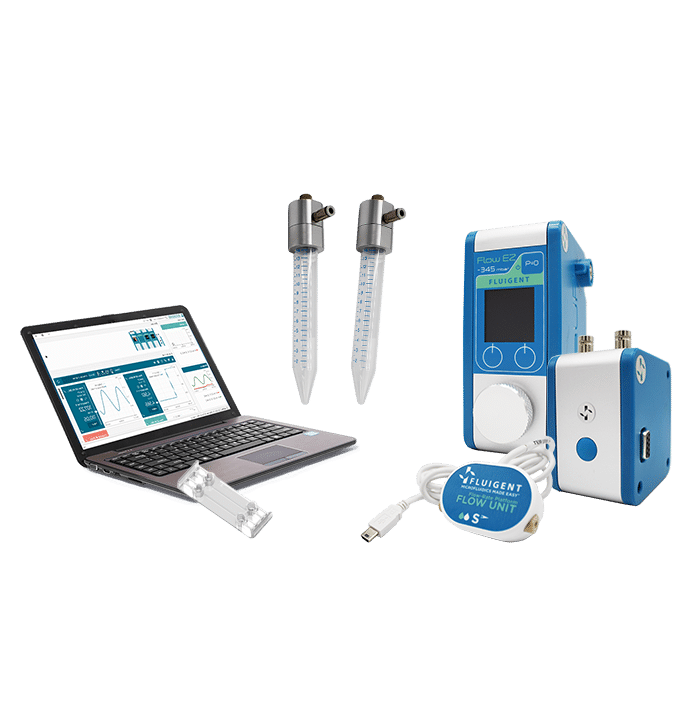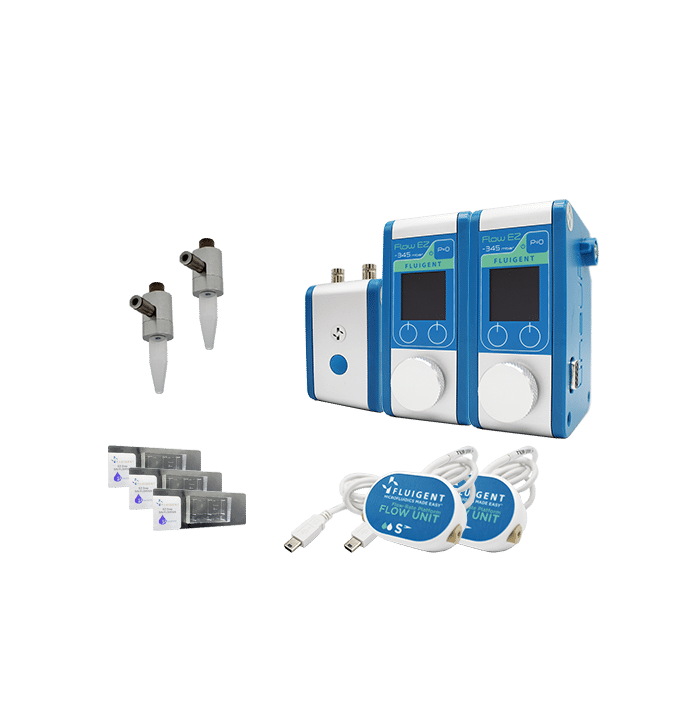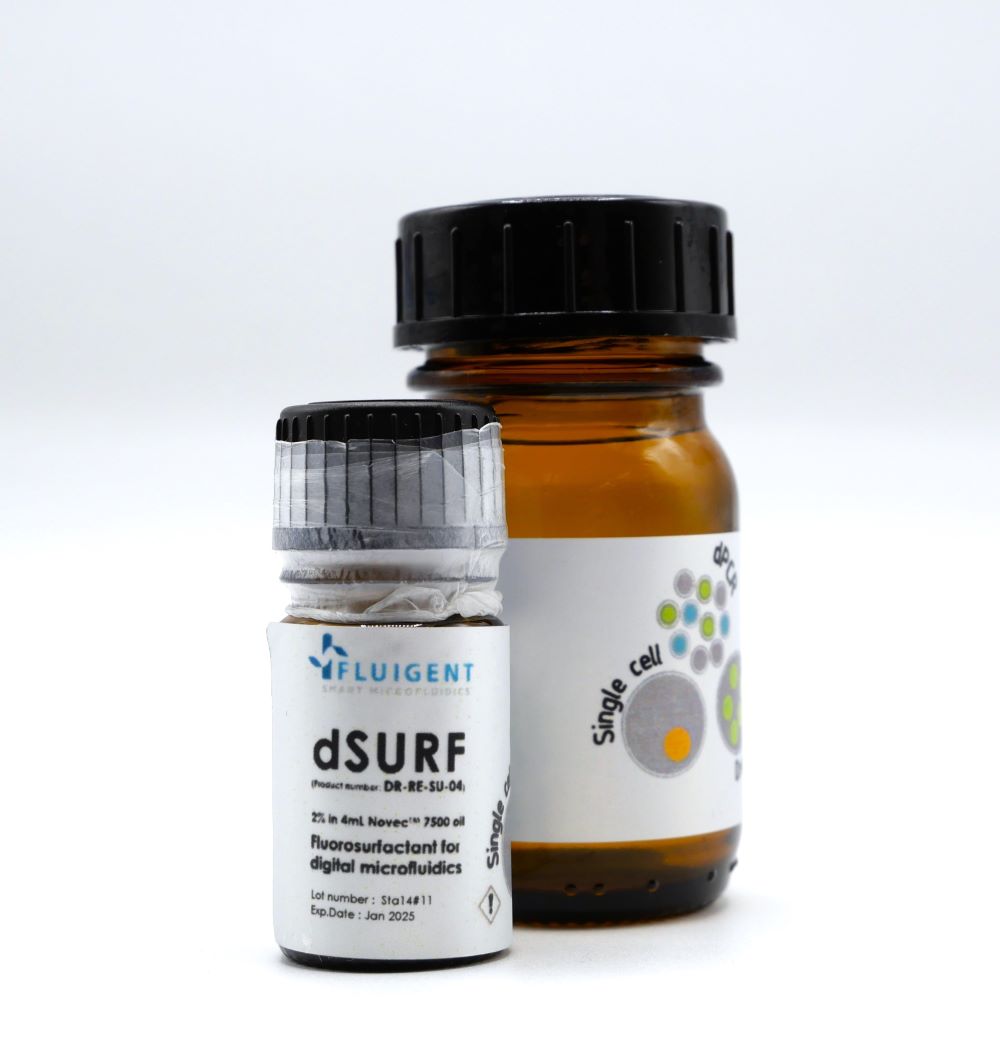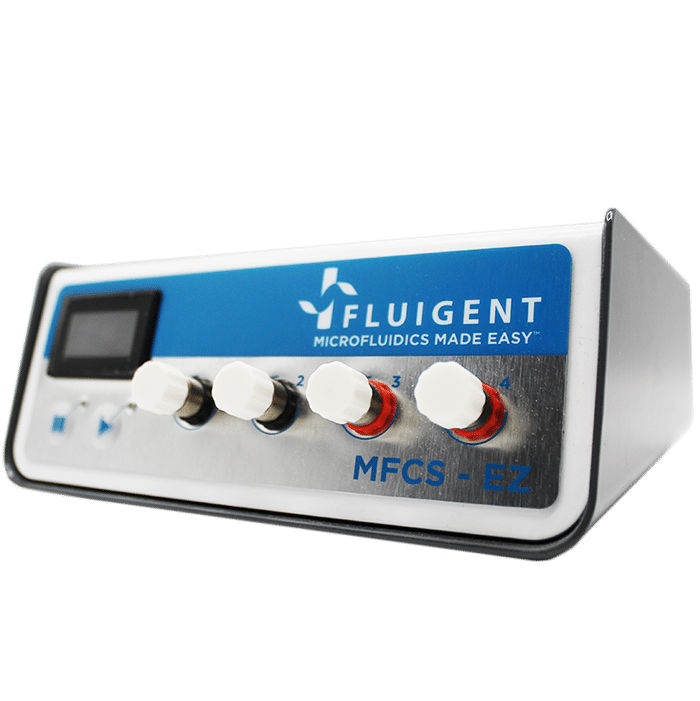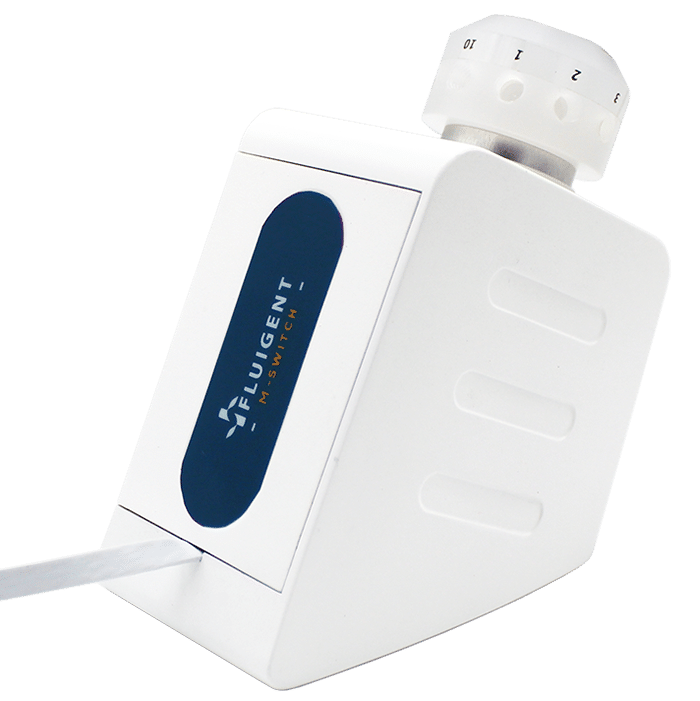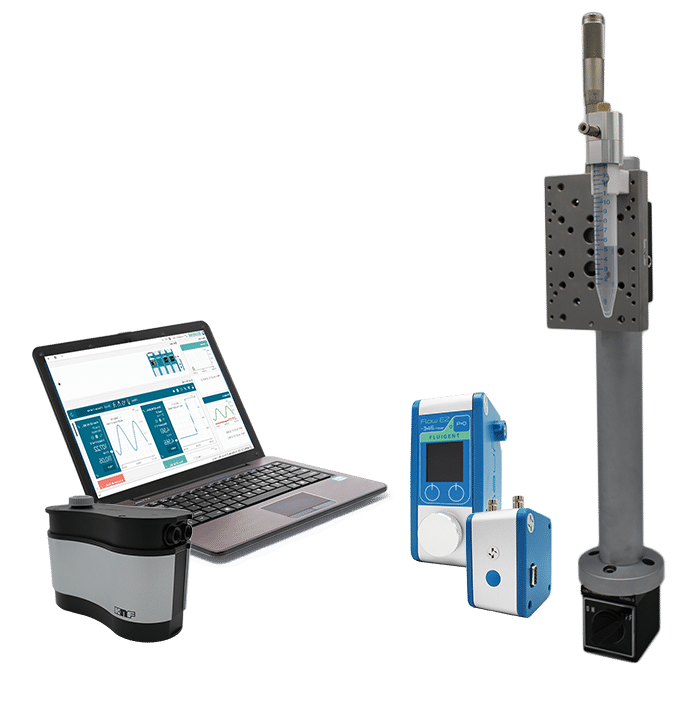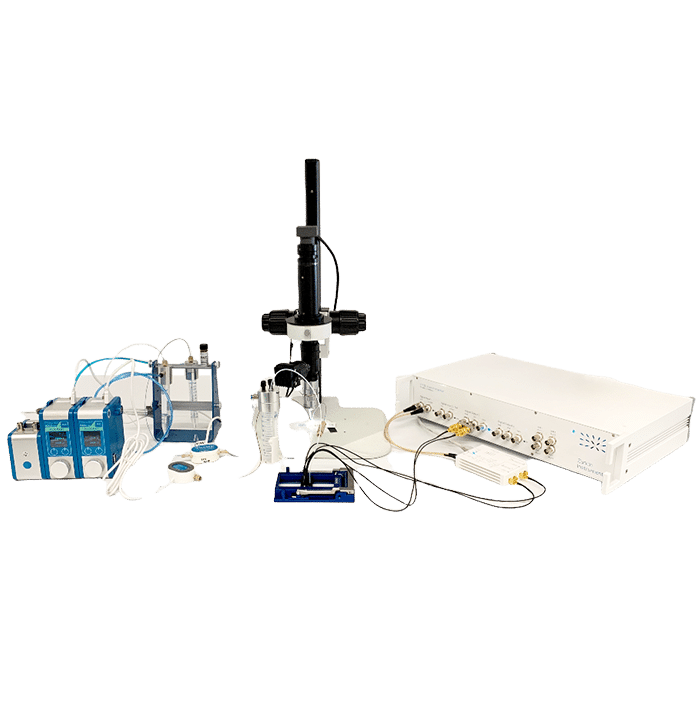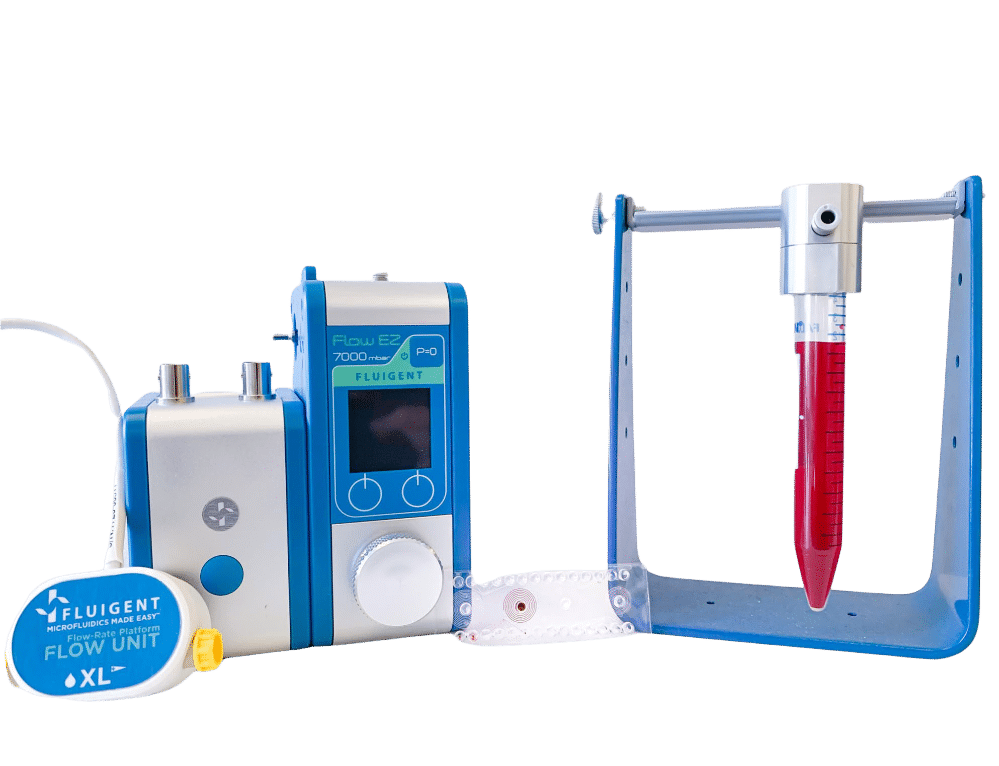Microfluidics for Cell Analysis
The importance of flow control in cell analysis
- Better precision
- Study at single-cell level
- Non invasive techniques
Main Applications of Microfluidics for Cell Analysis
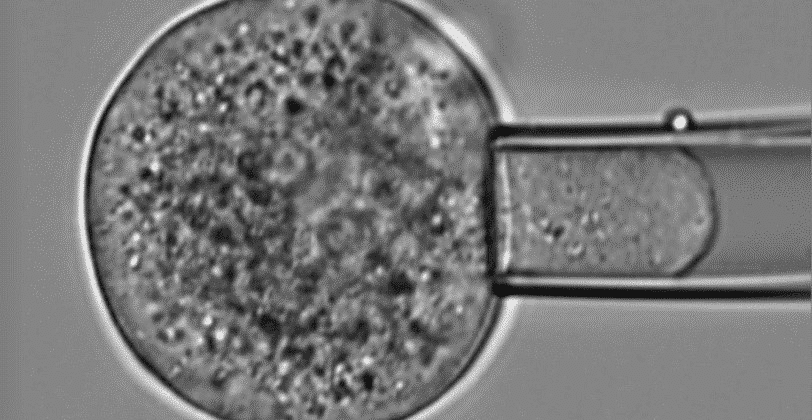
Biomechanics
An advantage of accurate fluid control is visible in micropipette aspiration. This method is a powerful, non-invasive technique to evaluate how biomechanical properties of single cells or tissues govern cell shape, cell response to mechanical stimuli, and transition from nontumorigenic to tumorigenic state or morphogenesis.
See the Micropipette Aspiration Package.
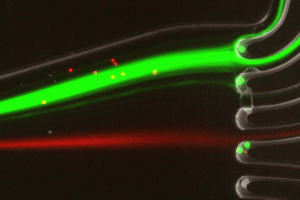
Cell Sorting
Many research applications call for sorting and isolating cells from a heterogeneous cell mixture. The use of microfluidics for cell analysis is useful for sorting cells with high accuracy and stability. The need to isolate rare cells such as circulating tumor cells (CTCs) from blood samples increases the demand for cell sorting devices. As opposed to conventional instrumentation, microfluidic devices for cell sorting are easy-to-use, smaller, versatile, and affordable.
Microfluidic cell sorting can be combined with additional fluidic operations for complete lab-on-a-chip applications, as well as for diagnostic and therapeutic purposes. These devices make use of a wide range of techniques to sort cells with specific speeds and efficiencies. The possibility to easily tune the design of the microfluidic device allows for the sorting of cells of different sizes with throughput (flow rate) specific to the user’s need.
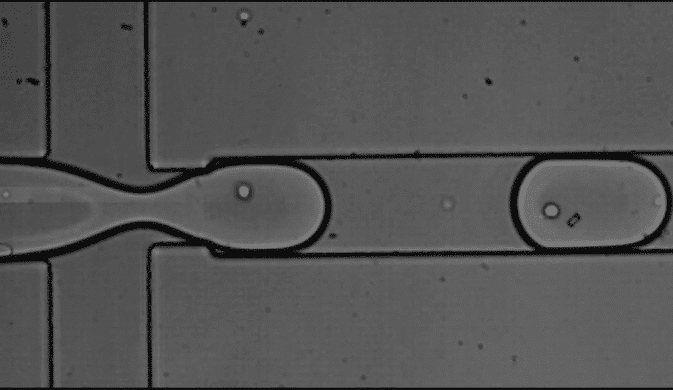
High-throughput single-cell analysis
The use of microfluidics for cell analysis offers one of the most promising approaches that not only provides information-rich, high-throughput screening, but also allows the creation of innovative conditions that are impractical or impossible by conventional means.
Analysis of healthy and diseased tissues, homogeneous at the macroscopic scale can reveal striking heterogeneities at cellular level. This variability is particularly well illustrated in polyclonal tumors, which constantly undergo mutations. In this respect, single cell analysis is necessary to fully capture the complexity of such tissues.
Resources
-
Microfluidics Case Studies The Hebrew University: Encapsulation and culture in 3D hydrogels for Single cell sequencing Read more
-
Expert Reviews: Basics of Microfluidics Micropipette aspiration of cells and tissues Read more
-
Microfluidic Application Notes Single cell sorter microfluidic platform Read more
-
Microfluidic Application Notes Impedance Measurement of Microbeads Read more
Microfluidics for Cell Analysis Experiments and Fine Fluid Control
Single-cell analysis
Single-cell analysis allows one to study tissues at single-cell level. It has an impact on drug discovery, such as in the case of tumor tissues, which, being composed of populations of different cellular mutations, is important to have the ability to test different drugs in each cell to understand their efficacy.
Working at cellular scale equally exposes many variations in gene expression: from specific biomarkers to insignificant delays in gene expression. High throughput analysis is then needed to multiply the number of profiled cells and discriminate relevant biomarkers from intrinsic population noise.Droplet microfluidics is particularly well suited and extensively used for high throughput single-cell analysis: individual cells are isolated and confined at high speed in pico-volumes to analyze biological processes at the cellular level. In this context, having a precise control of the flow is a key parameter to have reproducible results.
Biomechanical studies
The application of microfluidics for cellular analysis is a useful tool for evaluating, monitoring and controlling chemical or biological events for cell detection and sorting. Cell detection is generally performed using optical methods such as FACS (Fluorescent Activated Cell Sorting). Flow cytometry is the technique used to detect and measure physical and chemical characteristics of a population of cells or particles. This technique is widespread for cell analysis (size, shape, and granularity).
Cell sorting
Microfluidic-based cell sorting holds promise in both academic research and industrial settings.
Microfluidic chips offer great modularity, versatility, and cost-effectiveness. This, together with their small size, makes them one of the main rivals to currently available commercial cell sorters, both in the research and biomedical sectors.
Cell sorting on microchips provides numerous advantages over conventional methods by reducing the size of necessary equipment, eliminating potentially hazardous aerosols, and simplifying the complex protocols commonly associated with cell sorting.
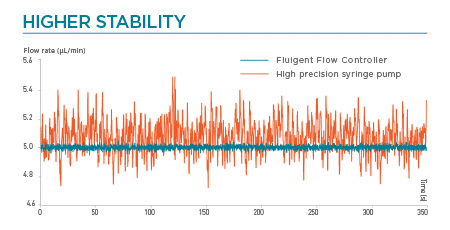
Flow control systems available for microfluidic applications
The use of microfluidics in cell analysis allows one to manage control of the flow, thus having a great control over the forces applied to the cells. This allows one to obtain results in a short time with high reproducibility and precision.
Multiple flow control technologies are available for sub-milliliter range fluid management. Designing reliable and functional microfluidic systems requires knowledge of the available liquid transfer solutions.
Pressure control for better results
Syringe and peristaltic pumps were the first instruments to be used as they were the two available solutions on the market. As demand for microfluidic pumps with higher flow stability, fast response time, versatility and automation capabilities has increased, pressure controllers have become the device of choice. Fluigent offers a wide range of solutions in this area.
With pressure-based pumps, the working principle is to pressurize the sample reservoirs and control the pressure drop between the inlet and the outlet of the microfluidic system. The responsiveness of the flow rate depends on the responsiveness of the pressure pump.
